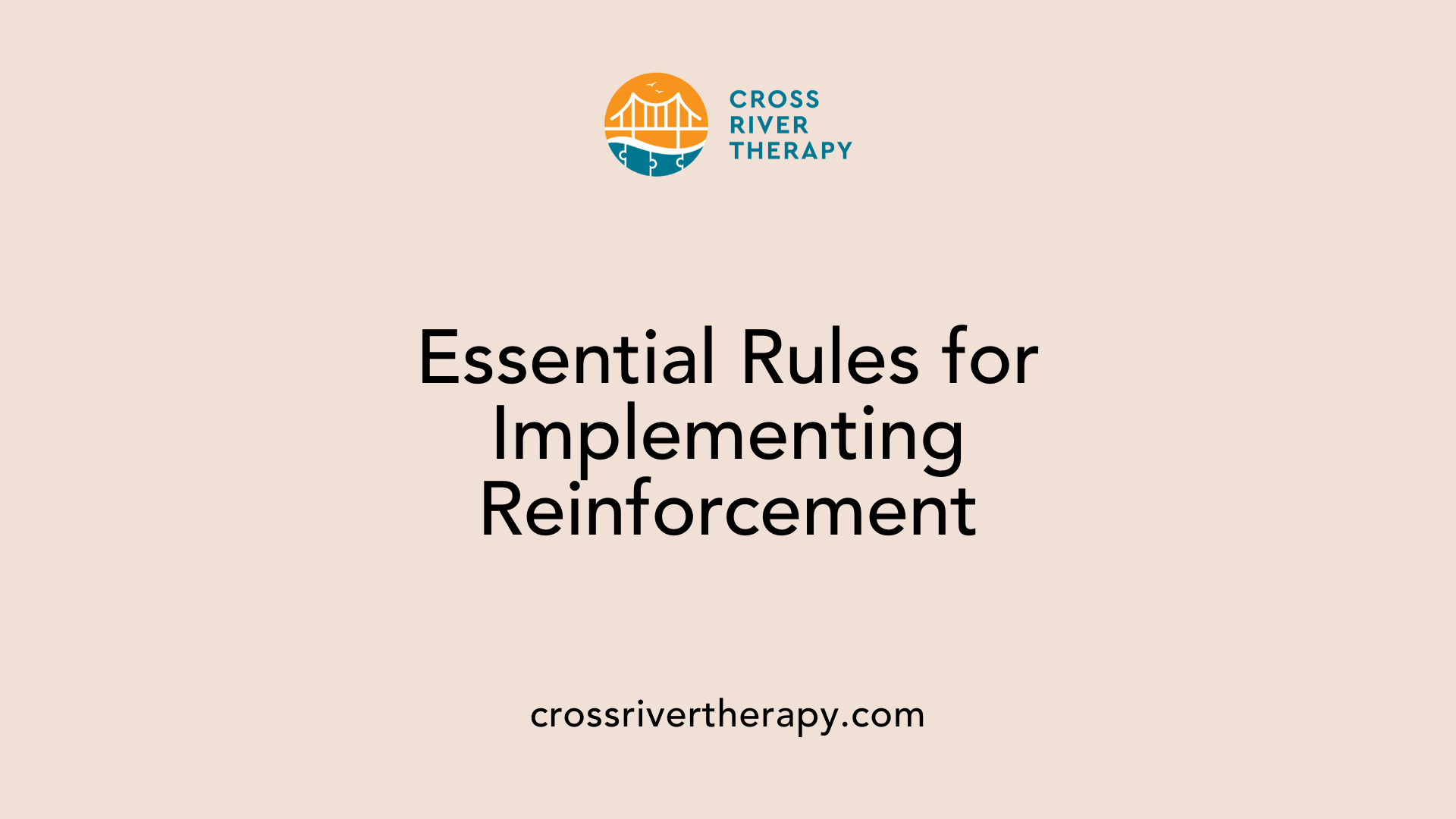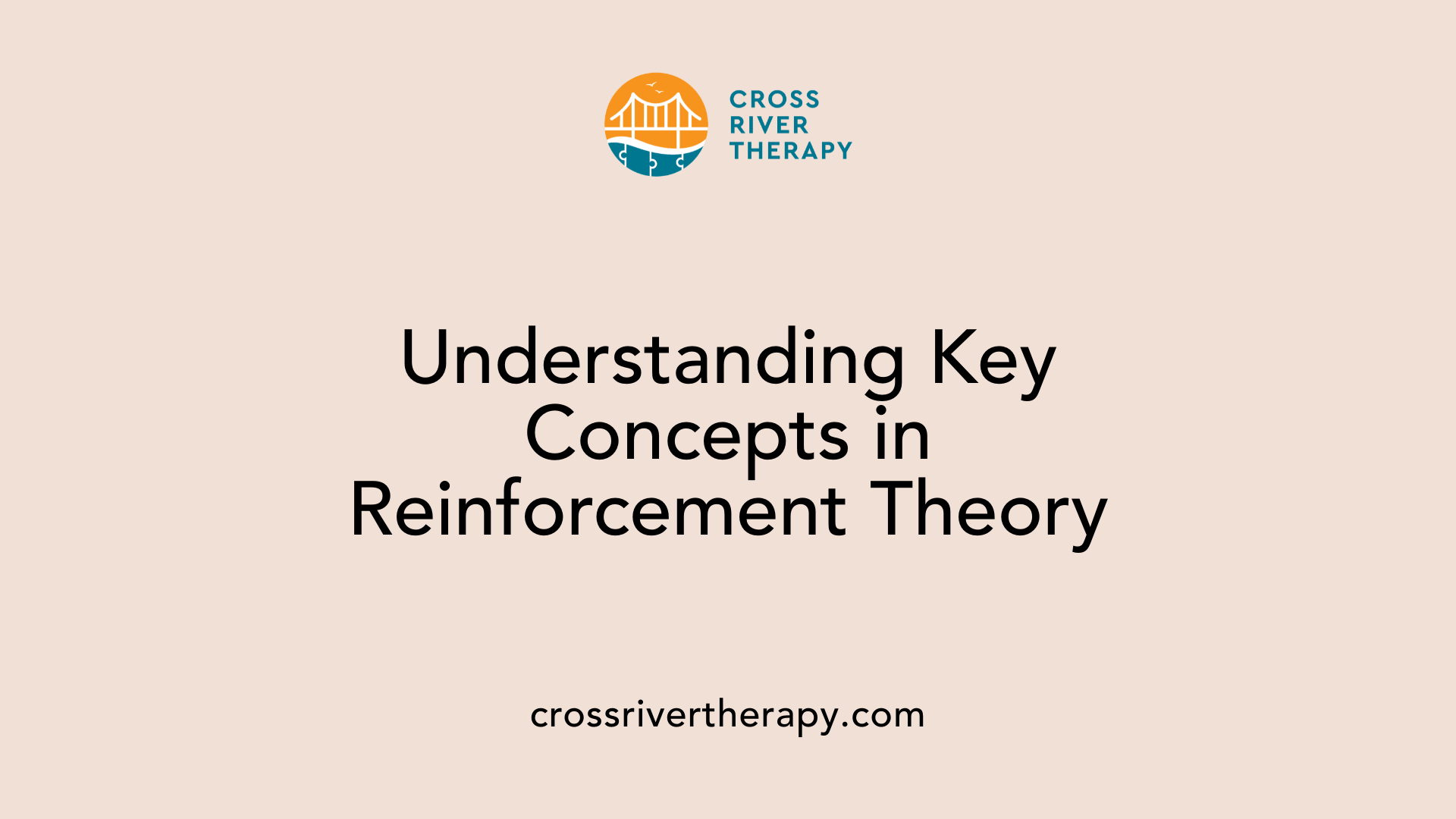Understanding the Principles of Reinforcement in ABA Therapy
Exploring the Impact of Reinforcement in Behavior Analysis
Introduction to Reinforcement in ABA Therapy
Applied Behavior Analysis (ABA) therapy is a well-established approach that utilizes reinforcement principles to encourage positive behavior changes, especially in individuals with Autism Spectrum Disorder (ASD). Understanding the methods and significance of reinforcement within this framework is crucial for parents, educators, and therapists dedicated to enhancing the quality of life and learning outcomes for those they support. This article delves into the key principles, techniques, and effects of reinforcement responsible for shaping behaviors in ABA therapy.
Principles of Reinforcement in ABA Therapy
Understanding reinforcement
In Applied Behavior Analysis (ABA) therapy, reinforcement plays a vital role in shaping behavior. Reinforcement focuses on increasing the likelihood of desired behaviors by providing specific incentives following those behaviors. The effectiveness of reinforcement can vary greatly from person to person, highlighting the need for tailored approaches that resonate with individual motivations.
Definition and distinction between reinforcers and rewards
A significant aspect of reinforcement is distinguishing between reinforcers and rewards. Reinforcers are defined as stimuli that, when introduced after a behavior, significantly increase the likelihood of that behavior being repeated. For instance, praise from a teacher serves as a reinforcer for good behavior. In contrast, rewards may not consistently enhance behavior; they can be perceived as enjoyable without fostering repeated behaviors. This distinction is crucial for setting effective behavioral interventions.
Importance of controlled access to reinforcers
Managing access to reinforcers is essential in ABA therapy. If individuals have unrestricted access to reinforcers, their motivational value may diminish, leading to less effective behavioral change. By strategically limiting access to these reinforcers, therapists can maintain their potency, thereby ensuring that they remain powerful motivators for the desired behaviors.
Strategies for encouraging positive behaviors
To encourage desirable behaviors, ABA practitioners often employ several strategies:
- Immediate Reinforcement: Providing reinforcers immediately after the desired behavior.
- Variety in Reinforcers: Utilizing a range of reinforcers, such as social praise, tangible rewards, or token systems, to keep motivation high.
- Consistency and Personalization: Ensuring that the reinforcement is consistent and tailored to the individual's preferences, which is critical for promoting lasting behavior change.
- Focus on Positive Behaviors: Actively recognizing and reinforcing positive behaviors to discourage maladaptive behaviors by redirecting attention.
Innovative Reinforcement Ideas in ABA

What are some reinforcement ideas in ABA therapy?
In ABA therapy, various reinforcement techniques can significantly enhance client engagement and motivation. Employing preference assessments is essential to identify what motivates an individual. Here are some innovative reinforcement ideas:
Sensory Experiences:
Sensory reinforcers like fidget toys or engaging in sensory play can be very effective, especially for clients who benefit from tactile stimulation.Edible Reinforcers:
Offering small, preferred edible items after exhibiting desired behavior can motivate individuals, such as involving taste testing as a reward.Social Interactions:
Encouraging peer activities or group engagement as a form of social reinforcement can enhance the learning experience.Activity-Based Reinforcers:
Incorporating enjoyable activities such as outdoor play or virtual reality experiences can pique interest and promote learning.
Tailoring these reinforcers to the client's unique preferences is crucial for personalizing interventions, ensuring they remain effective. Consistency in applying these reinforcers also helps sustain focus and reinforces desired behaviors. Overall, a customized approach is vital for the success of ABA therapy.
Essential Rules for Implementing Reinforcement

What are the rules of reinforcement in ABA?
The rules of reinforcement in Applied Behavior Analysis (ABA) are critical to effectively encouraging desired behaviors. Central to these rules is the concept of reinforcement schedules, which dictate how and when reinforcements are administered.
Reinforcement Schedules
Reinforcement schedules can be classified into two main types: continuous and partial (or intermittent) reinforcement.
Continuous Reinforcement: In this schedule, a reward is given for every occurrence of the desired behavior. This method is effective in the initial stages of learning, resulting in rapid acquisition of new behaviors. However, it can lead to a quicker extinction of the behavior if the reinforcement is suddenly removed.
Partial Reinforcement: This includes various schedules that provide reinforcement only occasionally, which can lead to more persistent behavior. The common types are:
- Fixed-Ratio Schedule: Reinforcement after a specific number of responses.
- Fixed-Interval Schedule: Reinforcement after a set amount of time.
- Variable-Ratio Schedule: Reinforcement after a random number of responses, promoting high resistance to extinction.
- Variable-Interval Schedule: Reinforcement after varying amounts of time, maintaining a steady level of response.
Importance of Reinforcement Schedules in Maintaining Behaviors
Understanding and implementing these reinforcement schedules is critical for sustaining behavior changes. By selecting the appropriate schedule, practitioners can foster ongoing behavior maintenance and enhance the likelihood of desired actions being repeated in various settings. Using partial reinforcement effectively can make behaviors more durable and less susceptible to extinction, ensuring that individuals continue to exhibit positive behaviors over time.
The Critical Role of Reinforcement in ABA Therapy

Why is reinforcement important in ABA therapy?
Reinforcement is crucial in Applied Behavior Analysis (ABA) therapy as it strengthens desired behaviors by controlling the consequences of individuals' actions. When therapists utilize positive reinforcement techniques, such as praise or rewards, they create a motivational environment that encourages individuals, especially children, to repeat beneficial behaviors.
Immediate and contingent reinforcement practices are particularly important. This means that the reward must follow the desired behavior without delay, establishing a clear connection between action and consequence. For instance, if a child completes their homework and immediately receives praise, this reinforces the behavior, making it more likely to occur in similar situations in the future.
Furthermore, customizing reinforcement strategies to fit each individual's unique needs and preferences is essential. For example, some may respond better to social reinforcers like praise, while others might prefer tangible items or privileges. This individuality makes the reinforcement process more effective, promoting not only skill development but also engagement in the learning experience. Ultimately, reinforcement serves as a foundational element in ABA therapy, significantly enhancing behavior modification and learning outcomes.
Types of Reinforcement Strategies in ABA
In ABA therapy, various types of reinforcement are employed to increase desirable behaviors. The main categories include:
- Natural Reinforcers: Intrinsic satisfaction derived from completing a task.
- Social Reinforcers: Using praise, attention, or social interactions to validate behavior.
- Tangible Reinforcers: Providing physical rewards like toys or snacks.
- Token Reinforcers: Symbolic rewards, such as earning tokens that can be exchanged for larger rewards.
Importance of Tailoring Reinforcement**
Tailoring reinforcement strategies not only enhances their effectiveness but also ensures that the goals are met in a way that resonates with the individual. By assessing preferences and applying the right type of reinforcement, therapists can create a supportive framework that fosters positive behavior changes.
Understanding Key Concepts in Reinforcement Theory

What Are the Key Principles of Reinforcement Theory?
Reinforcement theory hinges on the notion that behavior is shaped by its consequences. There are several core principles to consider:
- Positive Reinforcement: This involves presenting a desirable stimulus following a desired behavior, increasing the likelihood that the behavior will be repeated. For instance, a child receiving praise for completing homework is more likely to do it again in the future.
- Negative Reinforcement: This occurs when an unpleasant stimulus is removed after a desired behavior, thereby increasing that behavior. An example is hitting the snooze button to eliminate the alarm sound, which motivates the behavior of waking up at a more pleasant time.
- Positive Punishment: This principle introduces an aversive stimulus to decrease unwanted behavior. Assigning extra chores for inappropriate language serves this purpose.
- Negative Punishment: This involves taking away a pleasant stimulus to reduce undesirable behavior. For example, removing a favorite toy can deter aggressive actions.
- Extinction: This concept describes eliminating a behavior by withholding reinforcement. If a child who tantrums for attention no longer receives it, the frequency of tantrums is likely to decline.
The Interplay of Reinforcement and Punishment
The dynamic between reinforcement and punishment plays a crucial role in behavior modification. While reinforcement aims to increase desirable behaviors, punishment focuses on decreasing undesirable ones. It's essential to strike a balance; excessive reliance on punishment can lead to negative emotional outcomes, while well-implemented reinforcement strategies foster positive behavior change.
Role of Extinction
Extinction is a strategy that can be employed when reinforcement fails to yield desired behaviors. By consistently withholding reinforcement after a behavior occurs, the behavior may diminish over time. It’s important to note that extinction can lead to an initial increase in the unwanted behavior, often referred to as an "extinction burst," before it ultimately decreases.
Schedules of Reinforcement and Their Effect
The effectiveness of reinforcement is greatly influenced by how and when it is delivered. Different schedules of reinforcement include:
| Schedule Type | Description | Example |
|---|---|---|
| Continuous | Reinforcement is provided after every occurrence of the behavior. | A child receives a sticker for every math problem solved correctly. |
| Intermittent | Reinforcement is given only after an unpredictable number of responses or after a certain amount of time has elapsed. | A child earns tokens after completing several tasks but sees a variable reward ratio. |
Understanding these principles helps individuals tailor their approaches in therapeutic and educational settings, ensuring behaviors are reinforced effectively to promote long-term positive outcomes.
Conclusion: Reintegration of Reinforcement Methods
Reinforcement remains a vital component of ABA therapy, providing a structured approach to behavior modification that is both effective and adaptable. By understanding and applying diverse reinforcement strategies, caregivers, educators, and therapists can foster environments that support growth and learning while tailoring interventions to suit individual needs. Continued exploration and implementation of these principles will contribute to meaningful advances in both therapy and educational practices, leading to improved outcomes for individuals with ASD and other behavioral challenges.
References
- Principles of Reinforcement & How They Work in ABA
- Reinforcement Strategies: What is this Cornerstone of ABA Therapy ...
- ABA 101: Positive Reinforcement - Behavior TLC
- Reinforcement and Punishment - Different Types - How to ABA
- Reinforcement: 5 Key Principles - McRory Pediatric Services
- Principles of ABA - Understanding Behavior and Therapy
- Principles of ABA Therapy: A Comprehensive Guide - Crimson Heights



